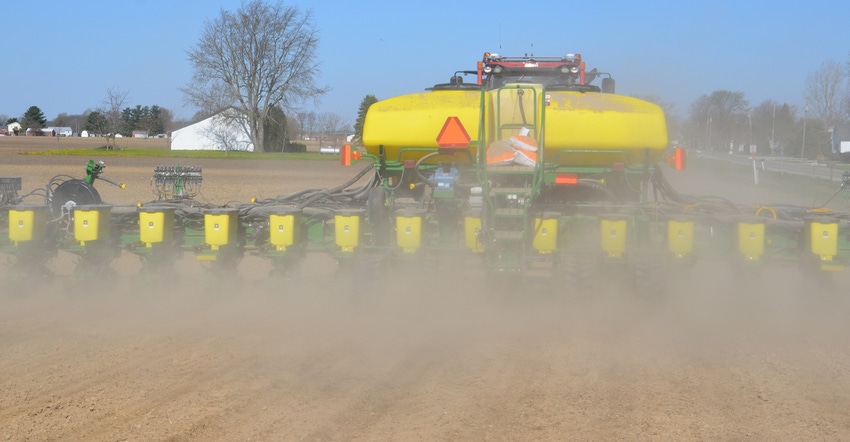October 21, 2020

We have a 10-year-old corn planter, which we’ve updated to electronic row units. This past spring, we saw inconsistency in emergence row to row. If we upgrade to hydraulic down pressure row by row and do some other improvements, we could invest $1,500 per row on our 24-row planter. How quick would payback be? Should we just buy a new planter?
The Profit Planners panel includes David Erickson, farmer, Altona, Ill.; Mark Evans, Purdue University Extension, Putnam County, Ind.; Jim Luzar, landowner and retired Extension educator, Greencastle, Ind.; and Steve Myers, farm manager, Busey Ag Resources, LeRoy, Ill.
Erickson: There is no harm investing significant amounts of money in an older planter if it improves performance and you’re willing to keep the planter longer to receive the payback. Ask for specific trade proposals to upgrade to a new or late-model used planter with the options you desire. Compare those prices with the cost to update your current planter along with needed maintenance. Evaluate honestly, and go with what makes the best deal for you.
Evans: Especially for no-till, the planter is probably the most important, although next year’s work started at harvest by making sure residue was evenly spread. Research suggests that for each inch of in-row seed spacing variability, or standard deviation of 1 inch, you lose roughly 2 to 3 bushels of corn per acre. Make sure your planter is performing well. One can’t make up potential lost by planter performance. Scratch out the math on paper or a spreadsheet and make a sound decision. Seedbed or soil surface uniformity is a key to planter performance.
Luzar: The first thing that intrigues me is that you’re working with a 10-year-old planter. Is your current configuration the planter technology you wish to utilize for the next five years? Have you investigated pneumatic down pressure in lieu of hydraulic? How much repair is required to address wearables on the planter? Don’t feel like you are married to this older machine.
Payback of the $36,000 upgrade will depend upon useful life, agronomic benefit and crop prices. Your agronomist should be able to quantify an estimate of yield loss due to uneven emergence. Extension agronomists can also be of assistance. If we assume you gain 3% more yield with down pressure, a $3.50 corn price and 1,000 acres of corn yielding 180 bushels per acre, payback could be achieved in only two crops, including allowing about $6,000 for overall maintenance and repairs.
I really got a case of sticker shock looking at new planters. Why not look at newer used planters to see if you can capture improvements in planter technology? A planter with a few crops under its belt may offer the down pressure feature and possibly other improvements. Head to the field to plant with a tool that provides the best possible stand, and financial payback will be forthcoming.
Myers: Your harvest results or plant observations at harvest will help indicate the economics. Good data, in this case, will be difficult, at best, to gather on a row-by-row basis to quantify. I suggest you consider what, if any, this improvement would make to the current unit’s trade-in value when you consider the new purchase. You know the issue and the solution, but need to consider the balance of information that will help make your decision.
You May Also Like




